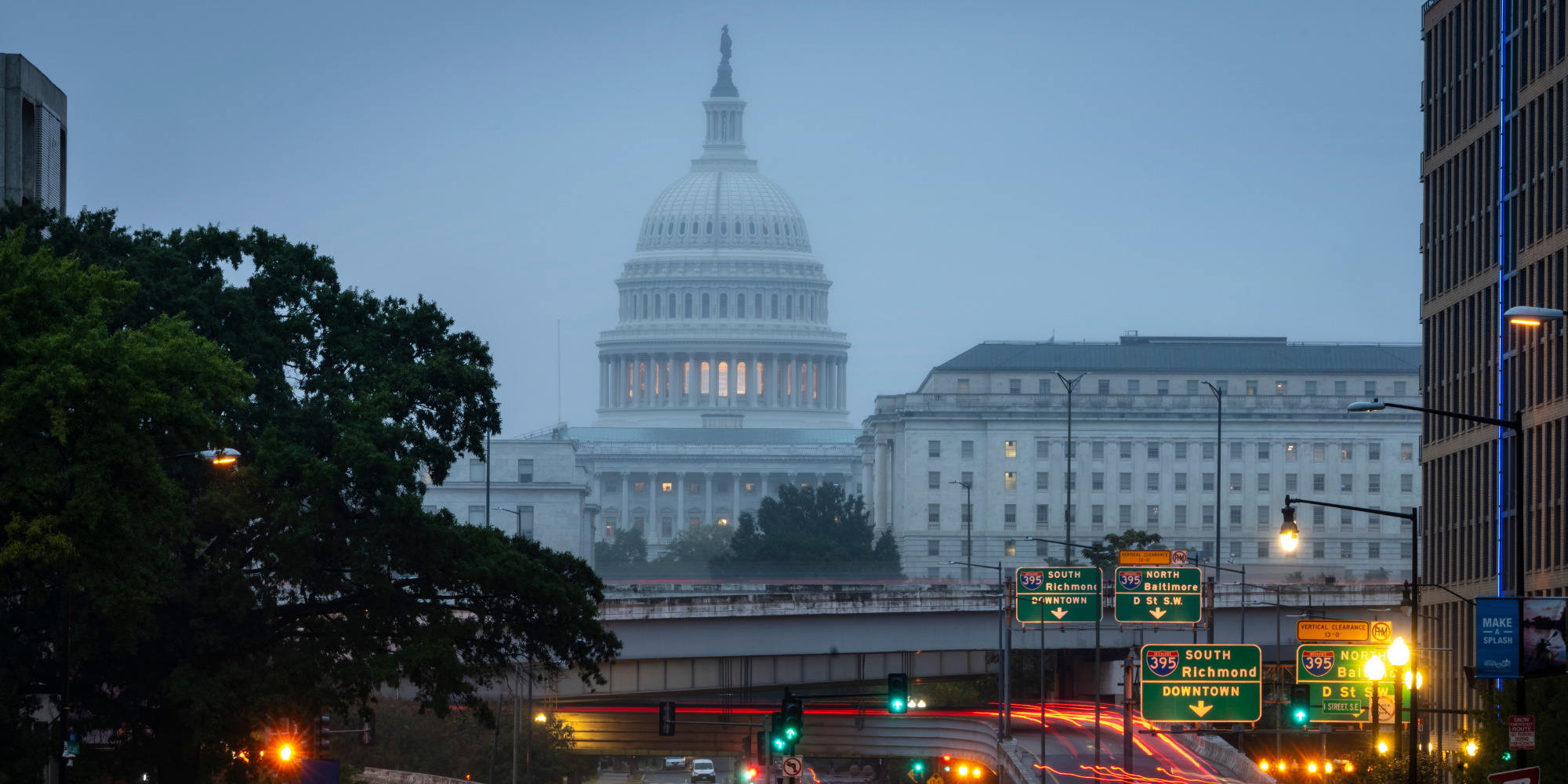Last week, as the U.S. Treasury approached the Congressionally imposed limit of its borrowing authority, Senate Democratic and Republican leaders struck a last-minute deal for an increase in the debt limit until early December. For weeks, Congress and the White House tried negotiating a longer-term solution to ensuring the United States Government would not default on payments owed, but those efforts were not successful. In the short term, Congress agreed to lift the debt ceiling by $480 billion so the U.S. Department of the Treasury would not run out of money to pay its bills on October 18.
But what exactly is the national debt, the debt ceiling, and what does breaching the debt ceiling, or a default, mean for cities, towns, and villages?
What is the National Debt?
The national debt is millions of promises—IOUs—that the American government has made to individuals, pension funds, international investors, and foreign governments, essentially to anyone who wants to finance the U.S. government. And with the latest raising of the debt ceiling, the national debt stands at just under $29 trillion.
Investors are willing to lend the U.S. government money with low interest because the U.S. Dollar is considered the reserve currency of the world, and because the U.S. has never broken its promise to pay investors back their money. This concept of paying off debt and not forgoing the responsibility of paying back its debts dates back to the days of Alexander Hamilton. As the first Secretary of the Treasury, Hamilton understood that if the new nation did not pay its debts, other nations would not lend it needed money or provide it credit for trade. Hamilton won the day, and this tradition of the government making good on its financial promises has stayed intact for more than 200 years.
What is the Debt Ceiling?
For more than a century, Congress decided the terms of bonds and notes that would be issued. Treasury would tell Congress it needed money for a project, and Congress would decide on the length, duration, and interest rate of the debt. For example, Department X’s horses needed new shoes, Congress would authorize Treasury to issue debt so Department X could shoe its horses.
This worked well at first, but as the country became increasingly complex this system of having Congress so deeply involved in the finances of the country took Congress’s attention away from bigger policy matters.
Then World War I broke out, and the U.S. entered the war. After this war started, it became too complex for Congress to approve debt for every new tank, plane, or another piece of military equipment. To make Congress’s job easier, it delegated the authority to Treasury to come up with a way to issue debt. This act might seem like a big delegation of authority to the executive branch, so to keep a check on it, Congress put a limit on the amount of debt the Treasury could issue before it would have to come back to Congress to ask for more authority.
It is important to keep in mind that the national debt—just under $29 trillion—represents past actions already approved by Congress. This debt is money that Congress has allowed the Treasury to spend. Constitutionally, this Congressional authority is referred to as the power of the purse. Nothing can be bought by the federal government without Congress’s greenlight. Given the greenlight, Treasury borrows to manage cash flow, and the deficit and debt increase.
Why is the Debt Ceiling Important to Cities?
Time and again, Congress finds itself in a situation where it needs to raise the debt ceiling, and it has always done so. It is not always pretty, but Washington, on this topic, has always agreed that the consequences of inaction are too great. However, a small but growing alliance of fiscal conservatives in Congress are signaling a higher tolerance for the potential consequences of a U.S. Government default.
On October 18, following the temporary increase in debt limit, Treasury Secretary Janet Yellen said the federal government is now able pay its bills until December 3, 2021. The National League of Cities has consistently urged Congress to take every step necessary to reduce the risk of default, and despite the partisan rhetoric, the conventional wisdom in Washington is that Congress will continue to find ways to make sure government payments are made on time and without interruption.
But as a thought exercise, what could be the consequences of a default on the national debt? First, the capital markets would be roiled by the turmoil in Washington. Equities would drop, and city residents would feel less wealthy. Depending on the duration of the default, it could trigger a recession. A recession would affect income taxes as people spend less and hoard cash.
Second, the cost of issuing debt for cities could raise. The cost of the U.S. government debt would rise and as a result, it could push up the borrowing costs for local governments as they have to compete against the federal government for the same dollar. On the other hand, U.S. Securities might not be seen as less secure and local government debt could be more attractive to investors. But even in this more optimistic scenario, defaulting on the debt would likely provoke substantial federal budget cuts, including annual federal funds that go to local governments.
Finally, emergency aid from the federal government might be delayed or even withheld. The nation is facing extreme weather events and other disasters that are rising both in frequency and severity—from the wildfires in the west to hurricanes in the south. Money that flows from the Federal Emergency Management Agency (FEMA) to local governments after disasters could be jeopardized.
All of these are possible impacts. It is important that we let lawmakers know that it is breaching the debt ceiling will have real-world consequences for cities, towns, and villages and that they should take steps to permanently end the risk of a national default.
Become a Member at NLC
Join our network and get access to timely resources, proven best practices, and connections to peer networks.










